|
|
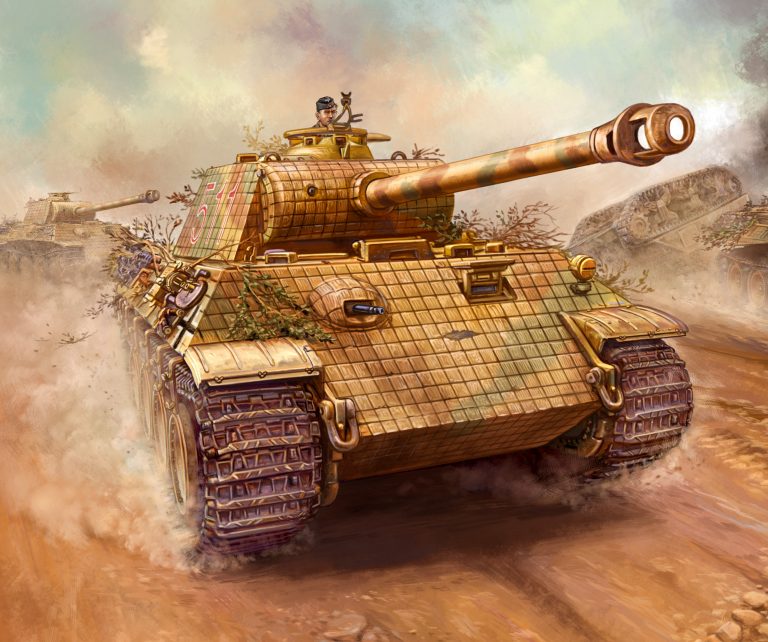 |
Fortress Europe: German Spotlight
With Phil Yates
Despite the setbacks of 1943, at the start of 1944 the German Army was still a formidable force. The front-line forces were receiving increasing numbers of the latest weapons, including Tiger and Panther tanks, powerful 8.8cm tank-hunters, and armoured infantry half-tracks, and the soldiers manning them were highly-skilled, hard-bitten veterans, still confident of victory despite the many enemies arrayed against them.
Check out Fortress Europe in the online store here...
|
| Perhaps the biggest challenge of building a German force is simply choosing what to take. There are so many exciting options, but their exceptional quality — both technically and in their training and doctrine — limit what you can take. The good news, though, is that this makes it easy to collect a variety of options and vary your force depending on the situation you expect to face and the style of tactics you want to try out today. |
|
Tiger Tank Company
- Uses same Tiger tanks as Mid War.
- Elite heavy tanks with thick armour and powerful guns, yet more mobile than most medium tanks. Ploughs through terrain without a problem.
- Expensive quality, but still cheap enough to field a good-sized company.
|
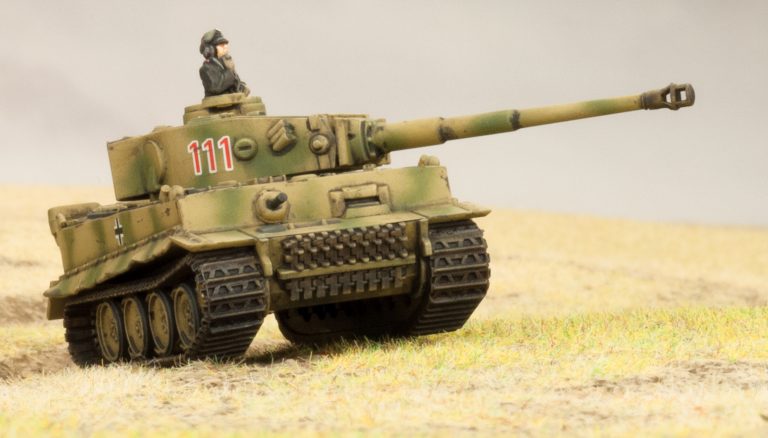
|
|
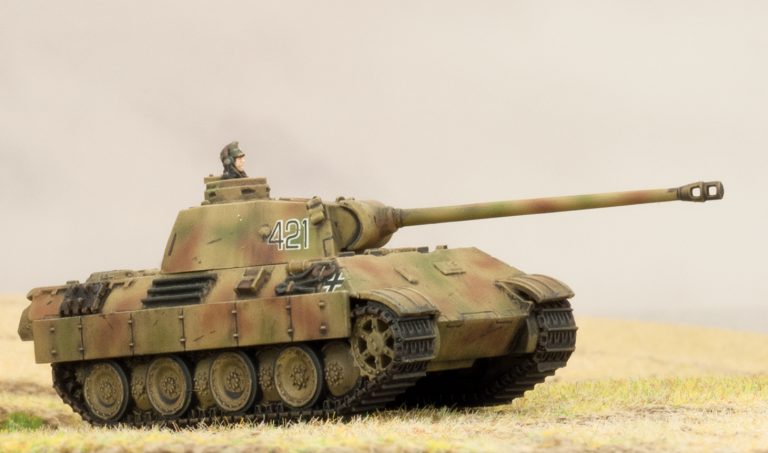
|
Panther Tank Company
- Uses same Panther tanks as Mid War, or the new plastic D-Day Panther.
- More cost-effective than Tigers. Same front armour as a Tiger, gun has the same performance, speed is faster than most medium tanks, but thinner side and top armour.
- Flexibility. Can swap out platoons of Panther tanks for a platoon of Tiger heavy tanks and a platoon of Panzer IV medium tanks.
|
|
Mixed Panzer III & IV Tank Company
- Same organisation and equipment as Mid War, so easy to transfer across.
- Baseline German medium tanks. Good armour and better guns than Allied medium tanks. High-quality crews.
- Platoons can mix older Panzer III light tanks with up-to-date Panzer IV medium tanks.
- Flexibility. Can swap out platoons of Panzer III & IV tanks for a platoon of Tiger heavy tanks, a platoon of Panther tanks, and a platoon of Flammpanzer III flame-thrower tanks.
|
|
StuG Assault Gun Company
- Same organisation and equipment as Mid War, so easy to transfer across.
- StuG assault gun has better front armour and the same gun as a Panzer IV medium tank, but has no turret so can’t shoot targets to the flanks, and is less effective when assaulting infantry.
- StuH assault howitzer has a brutal gun with 2+ firepower for knocking out enemy guns and infantry.
|
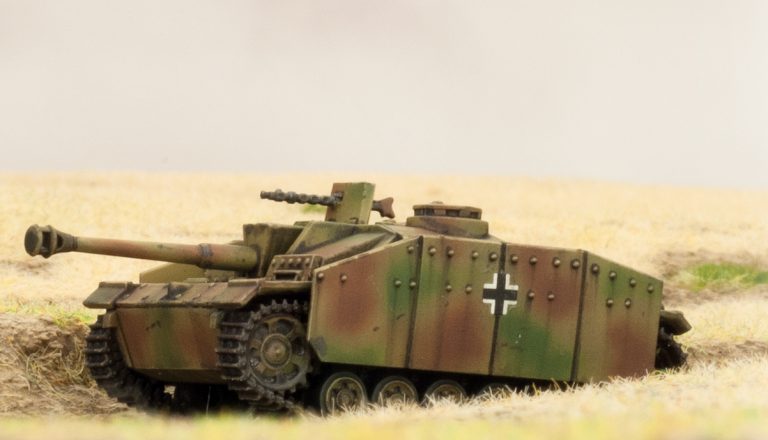
|
|
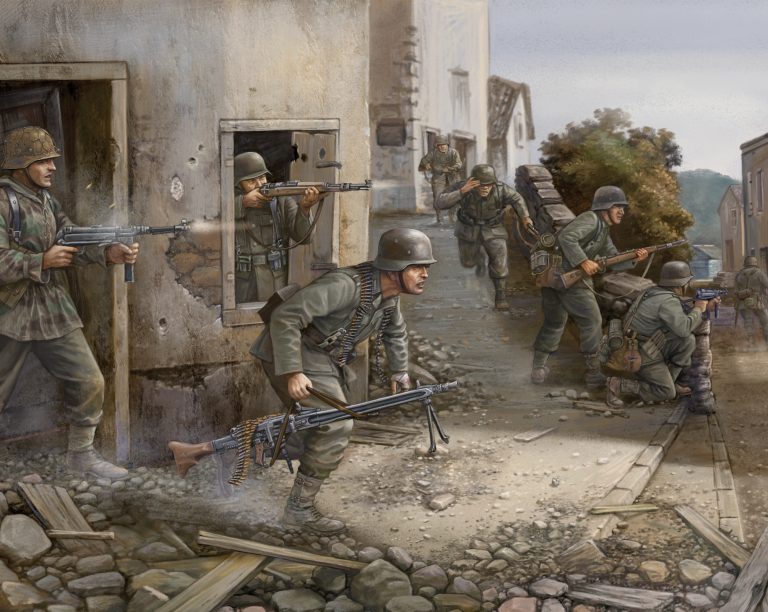
|
Panzergrenadier Company
- Same organisation and equipment as Mid War, so easy to transfer across.
- MG teams give plenty of firepower.
- Can add Panzerfaust anti-tank and 7.5cm anti-tank guns to keep tanks at bay.
- Armoured Sd Kfz 251 half-tracks for battlefield mobility, even under fire.
- Infantry can assault while mounted in their half-tracks to overrun light opposition.
- Half-tracked heavy weapons, including 7.5cm guns and flame-throwers. Grille gives integrated 15cm heavy artillery.
- Option to take dismounted troops. Save points by leaving the half-tracks at home.
- Fast and mobile with plenty of firepower in the attack, solid with massive firepower in the defence.
|
|
Grenadier Company
- Same organisation and equipment as Mid War, so easy to transfer across.
- Excellent, high-quality infantry.
- Platoons can get extra firepower with heavy machine-guns, 2.8cm anti-tank rifles, and Panzerschreck anti-tank.
- Well defended against tanks with both Panzerfaust and Panzerschreck anti-tank and 5 and 7.5cm anti-tank guns.
- Lots of integrated artillery with mortars, and 7.5cm and 15cm guns.
- Use skill and careful manoeuvring to avoid getting hit while pounding enemy with superior firepower, then assaulting to finish the fight.
|
|
Support
- Same organisation and equipment as Mid War, so easy to transfer across.
- Lots of impressive anti-tank options, especially the Hornisse, Ferdinand, and towed 8.8cm tank-hunters.
- Lots of artillery choice, with Hummel 15cm and Wespe 10.5cm self-propelled guns, Brummbär 15cm assault tanks, 10.5cm howitzers, and 15cm Nebelwerfer rocket launchers.
- Aircraft for every occasion, with the Stuka dive-bomber, Stuka (3.7cm) tank-hunter, and heavily-armoured Hs129.
|
|
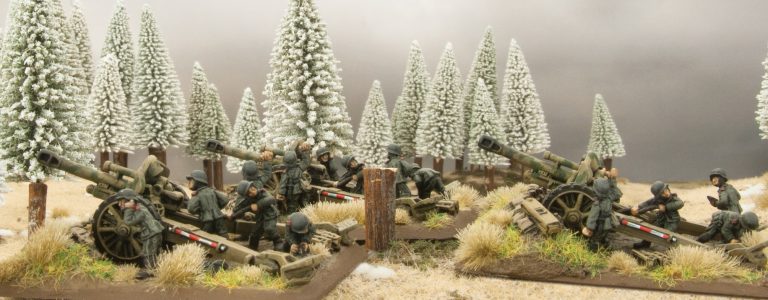
|
|
How Do The Germans Play?
The Germans in Fortress Europe are among the last of the old guard, trained before the tide turned, in the days when Germany was winning the war. They are rated as Confident, Veteran, and Careful, so are some of the best trained and most experienced troops available. Their faith in the thousand-year ‘Third Reich’ gives them a better Last Stand rating, so you can trust them to hang in there, even when things look bad.
This training follows in the footsteps of their legendary forebears, the stormtroopers of the First World War. Their Stormtroopers ability allows German troops to attempt two movement orders in each turn. Combined with their high skill rating, this allows them to fight with a finesse that no other army can match.
To go with this superb level of tactical prowess, German engineering provides you with the best tanks, such as the Panther and Tiger, and the most powerful guns, like the long 8.8cm which can penetrate any tank with ease. Even older tanks like the Panzer III have been brought up to the latest standards with bazooka skirts and HEAT ammunition.
In summary, a successful German force will use their superiority in equipment, training, skill, and cleverness, combined with a good dose of aggression, to keep the initiative, hit the enemy in their weak spots, while minimising the enemy’s opportunities to hit them back.
|
|
What to Expect in D-Day: German
Your Fortress Europe force will easily transfer to D-Day: German, transforming into a classic late-war force in the process.
Because the panzer divisions in Normandy had just been rebuilt with new equipment, all of their old equipment like Panzer III tanks and Ferdinand tank-hunters have been phased out, and replaced with useful new tools. In recognition of the increasing Allied airpower, the tanks gain their own integrated anti-aircraft, including powerful Mobelwagen self-propelled AA mounted on the Panzer IV chassis. The StuG assault guns have their own infantry escorts, and the infantry start fielding the very effective 12cm heavy mortar.
At the opposite end of the spectrum, the infantry charged with defending the ‘Atlantic Wall’ are mostly older family men and foreign conscripts, so the quality and resilience of your grenadiers is much reduced. On the other hand, you will get cheap infantry to hold ground while your elite panzer divisions fight a mobile battle.
D-Day: German will bring plenty of other exciting new choices and forces as well.
If these improvements aren’t for you, or you want to keep fighting on the Eastern Front, you might prefer to stick with Fortress Europe, and you certainly won’t be disadvantaged by doing so. No matter which way you plan to go, a Fortress Europe force is a good solid way to begin your journey.
What About D-Day: Waffen-SS?
The D-Day: Waffen-SS book is a little further away, so if that is your destination, you’ll want either Fortress Europe or D-Day: German (or both of them) to start building a panzer or panzergrenadier force in the meantime, ready to join the Waffen-SS when they arrive.
~Phil
|
|
|
Fortress Europe Q&A.
Join Alex and Phil, the writer of Fortress Europe, as he answers community questions sent in by the players.
|
|
|
Last Updated On Thursday, March 4, 2021 by Wayne at Battlefront
|
|